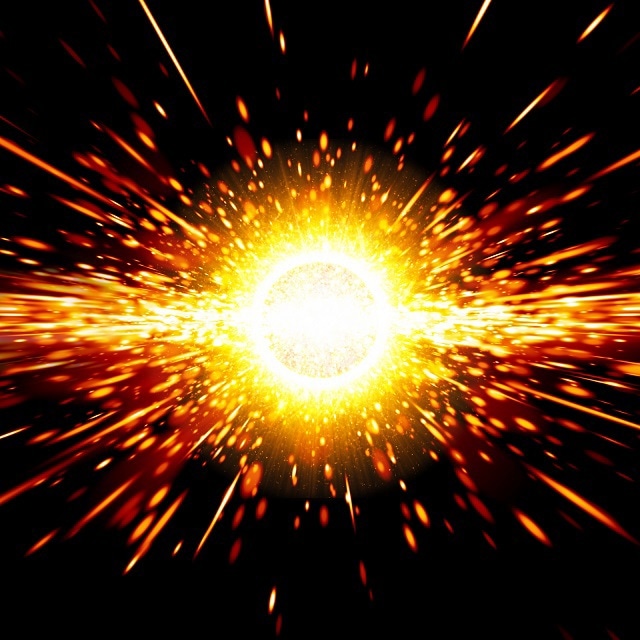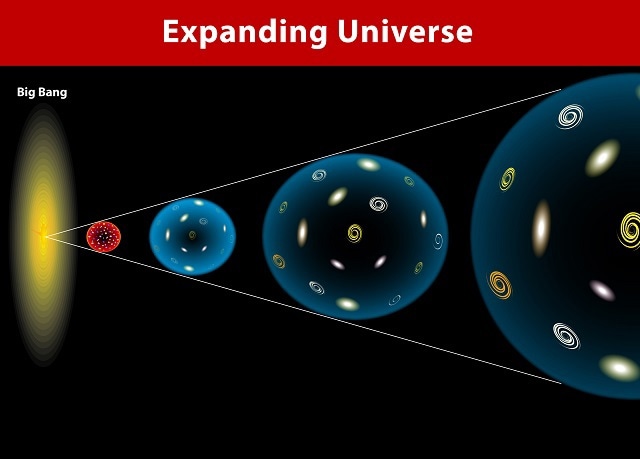
Image Credit: Igor Zh/Shutterstock.com
An accidental discovery by Robert Wilson and Arno Penzias in 1964 changed the entire landscape of cosmology and established the concept of a big bang as a keystone in our understanding of how the universe came into existence.
Steady State vs Big Bang
Throughout the 1940s and 1950s, cosmologists had been involved in a debate regarding the origin of the universe. By the start of the 1960s, the two most popular cosmological models in this scientific field were the Steady State theory and the Big Bang theory.
The Steady State model, which was championed by the English astronomer Sir Fred Hoyle, postulated that the universe obeyed the perfect cosmological principle. This meant that the universe was both homogeneous and isotropic in space and time when observed on sufficiently large enough scales. This theory also hypothesized that the universe had always existed and would continue to do so without much change.
In stark contrast, the Big Bang theory suggested that the universe had been formed fractions of a second after a huge explosion which happened billions of years ago. The concept of the ‘primeval atom’, which was used as the basis of the big bang theory as we know it, was first proposed by the Belgian astronomer and physicist, Georges Lemaître. This concept was then advocated and developed into a fully formed theory, in part by the Russian cosmologist George Gamow.

Image Credit: Designua/Shutterstock.com
The Big Bang’s Smoking Gun
In 1964 two American radio astronomers, Robert Wilson and Arno Penzias were working at the Bell Labs in Holmdel, using the Horn Antenna to map signals across the Milky Way. The Holmdel Horn Antenna was a highly sensitive instrument originally built to detect faint radio waves, which had been deflected off of satellites. In order for the antenna to work properly, all “noisy” interference, such as radio waves, radar, and heat, had to be completely eliminated.
However, after removing the obvious sources of interference, the researchers still noticed a faint, persistent, and ever-present noise emanating from every direction. It was not coming from a planet, the sun, or anywhere else in the Milky Way. As a result, the Wilson and Penzias could only logically conclude that the noise was originating from outside of our galaxy.
Meanwhile, at nearby Princeton, the astrophysicists Jim Peebles, Robert Dicke, and David Wilkinson were trying to detect microwave radiation. They predicted that the Big Bang explosion would have strewn both matter and the radiation out across the newly formed universe and were ready to build an experiment to try to test their hypothesis.
The radiation detected by Wilson and Penzias perfectly matched the predictions made by Peebles, Dicke, and Wilkinson. The cosmic microwave background radiation was dubbed a signature of the Big Bang event or its “smoking gun”.
A Bigger Bang
The discovery of the cosmic microwave background gave Penzias and Wilson the Nobel Prize in Physics in 1978 and is regarded as a hallmark moment in modern physical cosmology, validating the efficacy of the Big Bang Theory. Since its discovery, the cosmic microwave background has been a basic pillar of the cosmological model and continues to provide insights into the makeup of the universe.
The observable universe, made up of stars, planets, and galaxies, comprises less than 5% of the universe's total mass. The universe is believed to be mostly comprised of dark energy, a mysterious force driving the expansion of our universe at an ever-increasing rate. The next largest component is dark matter, which is believed to account for a large amount of the invisible mass in the universe.
Although dark energy and dark matter are still not fully understood, cosmic microwave background observations have become powerful tools for cosmologists to study the mysterious forces which are at work in the universe.
References and Further Reading
This article has been produced in association with the Pittcon Conference and Expo to celebrate the International Year of Light 2015.
For more information on how Pittcon are involved in IYL 2015, please visit www.pittcon.org